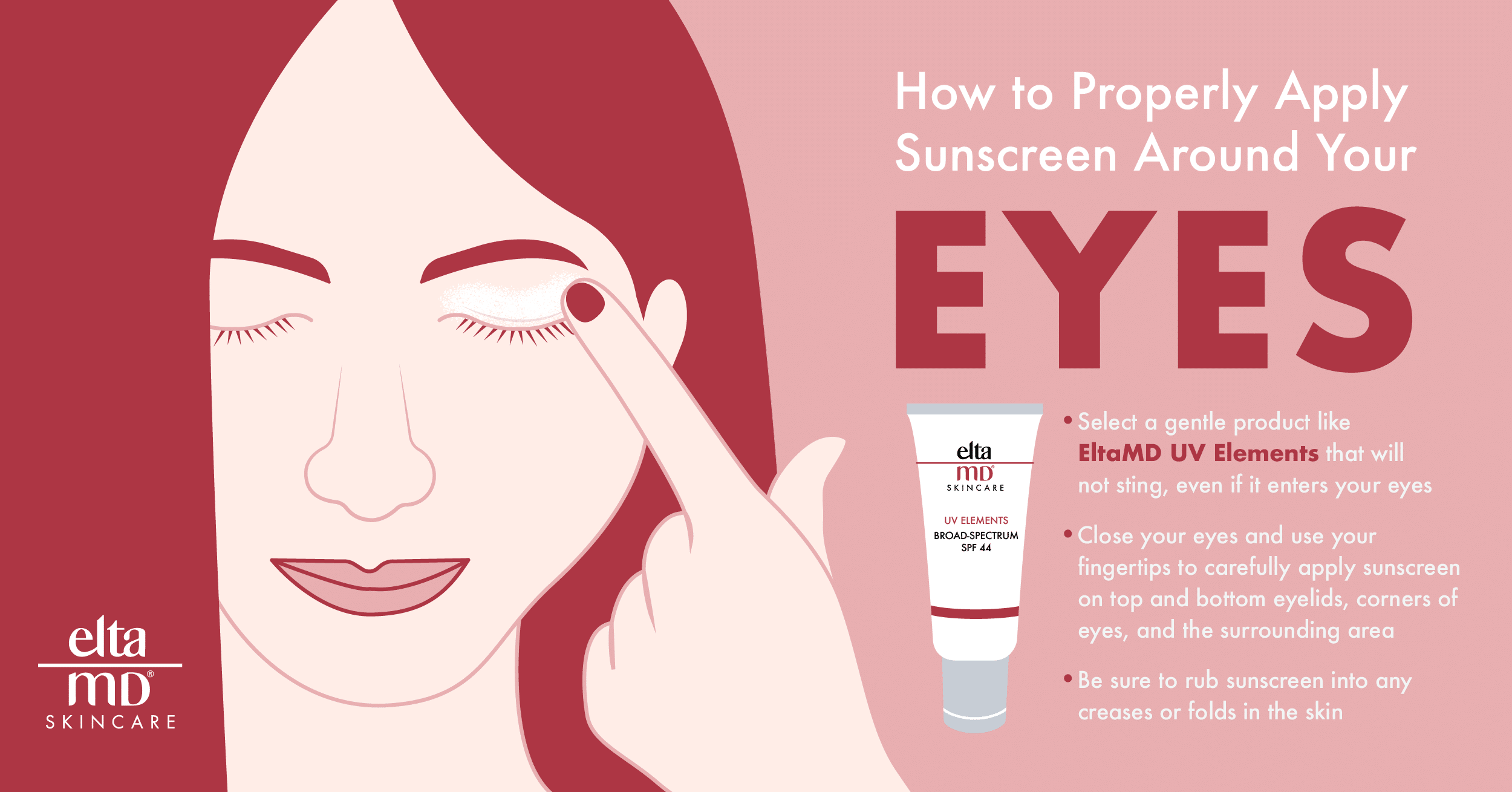When it comes to proper sun and skin care, you'll want to apply sunscreen all over—and that includes around the eyes. That said, the eyes are a highly sensitive area, and applying sunscreen there can cause stinging and irritation if you're not careful. Fortunately, with a little effort, you can learn how to protect your eyes to prevent both stinging and sunburns.
Why You Should Protect Your Eyes
Have you ever wondered, "Should I put sunscreen on my eyelids?" The short answer is yes. The eyelids, the skin around the eyes, and the eyes themselves are all at risk of becoming sunburned when exposed to the sun for long periods of time. This can lead to premature aging around the eyes (one of the first areas to show wrinkling), as well as other health concerns.
According to the Skin Cancer Foundation, sun protection of the eyes is important to prevent various skin cancers and even problems within the eye itself, like cataracts, keratitis, and macular degeneration. These health concerns can cause tissue damage, pain, and even vision loss, which sometimes can require surgery.
Sunburned Eyes and Eyelids
Some areas of the body, such as the arms and shoulders, are more obviously prone to sunburns. Some are less obvious, like the eyes and eyelids. Though you may not think to apply sunscreen so close to your eyes, it is important for your skin and eye health.
The American Academy of Ophthalmology warns that exposure to ultraviolet (UV) rays can lead to "sunburned" eyes and a similar condition called photokeratitis or snow blindness. Mayo Clinic states that sunburned eyes can feel painful and gritty, and too much UV light exposure can damage the eyes.
Similarly, the upper and lower eyelids are prone to sunburning if not well protected. Given that the lower eyelids are more exposed to sunlight, they are especially vulnerable. Though sunburns are temporary, they can be painful—especially as the eyelids are already an extremely sensitive area. Repeated exposure can lead to cumulative damage to skin cells on and surrounding the eyelids.
Skin Cancer Around the Eyes
Per the Skin Cancer Foundation, non-melanoma skin cancers on and around the eyelids are common. Studies have found that even people who frequently apply sunscreen often miss spots around the eyes, including the eyelids. This is mainly due to sensitivity concerns.
The most common type of skin cancer around the eyes is basal cell carcinoma. Squamous cell carcinoma and melanoma are less frequent in this area. Although most non-melanoma cancers near the eyes can be treated with surgery, this is definitely something to avoid.
Knowing that skin cancer can spread and require serious treatment, it's critical that you learn how to apply sunscreen appropriately.
How to Apply Sunscreen Around Eyes
Although some people avoid applying sunscreen to this area due to sensitivity or irritation, facial sunscreens are safe to apply here. Sunscreens that contain ingredients like zinc oxide and titanium dioxide may be a better choice for the eyelids, as they tend to be more suitable for sensitive skin. They may also go on dryer and sting less.
Of course, you'll want to avoid getting sunscreen directly in your eyes, but this can be difficult as many sunscreens have a thin consistency and sweating may cause the sunscreen to run. Some water-resistant sunscreens are formulated to prevent movement on the skin, which may be advantageous around the eye area.
The EltaMD UV Elements Broad-Spectrum SPF 44 Tinted Facial Sunscreen is suitable for use around the eyes as it is made with 100% physical ingredients and is water-resistant for approximately 40 minutes.
When applying sunscreen around the eyes and on the eyelids, gently close your eyes and massage the product into the skin with a finger—closing too tight scrunches up the skin and you may not coat the surface within the folds. Don't rush this part as sloppy work could leave you with irritated eyes and poor coverage.
Remember to reapply at least every two hours and directly after coming out of the water or sweating heavily.
Sun Protection for the Eyes Themselves
As recommended by the Skin Cancer Foundation, other forms of sun protection of the eyes and surrounding areas include the following:
-
Wear wide sunglasses that block 99 to 100 percent of UVA and UVB rays to prevent sun damage to your eyeballs. The labeling should certify this.
-
Wear a hat with a brim that's three or more inches wide and lined with tightly woven fabric that prevents sunlight from penetrating through.
-
Seek shade whenever possible, especially from 10 a.m. to 4 p.m., when the sun is at its strongest.
And remember to protect the eyes even when there is rain, snow, or a cloudy sky. Just because it's overcast doesn't mean damaging UV rays aren't a threat.
When you know how to apply sunscreen around your eyes and take the necessary precautions, protecting yourself from sunburns, skin cancers, and other sun damage is easy. It's simply a matter of taking the time—you won't regret it.
